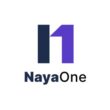Pennyworth CEO says banking authorisation is “in sight” as start-up plots growth
Pennyworth Financial, a new financial planning app and aspiring challenger bank, is finally reaching the end of its bank application process, with co-founder and CEO Jeremy Takle telling FinTech Futures that authorisation is now “in sight”.

Pennyworth is at the end of its bank application process
The start-up was founded in 2020 by Takle and Ben Harvey, two former executives of Barclays’ US digital consumer bank. The pair launched an original version of their app to UK customers in 2021 focusing on financial planning and wealth management, with the aim to apply for a bank licence to expand the offering and add additional capabilities. To proceed with the banking licence application, the company raised a pre-seed funding round in March 2022.
That round was led by an unspecified number of angel investors, with a follow-up crowdfunding round taking place on Seedrs in June 2022, where they raised over £784,000 at a pre-money valuation of £7 million. This funding allowed them to kickstart their authorisation process in Q2 2022.
The target audience
“There’s never been a more relevant time to get a good sense of your finances,” Takle says. “What we identified is that there is a large proportion of the population who just don’t benefit from financial advice and great value.
“It’s only the wealthy in society that get the benefit of advice, while most of the population make do with poor value and little guidance.”
Pennyworth quickly identified its target audience – which it calls “aspiring affluent” customers with either incomes or liquid savings of over £40,000. Takle estimates that market to consist of 10 million customers in the UK, with £700 billion in savings and over £100 billion in consumer credit.
Takle believes this particular bracket does not benefit from the advice of private banks and wealth managers and “suffer” from the value advice gap, while also being one of the highest revenue-generating segments for a retail bank.
“They get the same experience that all the mass market customers do, despite having more complex needs,” he says.
“Our business aims to attract that population into a free-to-use financial planning experience that also helps them identify better savings, better loan rates and other better financial features to close that value advice gap.”
To this end, Pennyworth aims to help customers overcome the usual barriers to accessing financial advice.
Key offerings
In the latest version of the company’s app, Pennyworth partnered up with open finance and data platform Moneyhub to leverage open banking and AI capabilities and provide users with an automated financial planning functionality.

Pennyworth is targeting the UK’s “aspiring affluent” population
Going forward, Pennyworth plans to add more financial products and features, including the aforementioned transition towards banking capabilities, as it inches closer towards obtaining a banking licence.
“We’re trying to recreate the private banking experience, but essentially for free to retail customers,” Takle says.
However, Pennyworth will not feature current accounts and cards, as the former Barclays exec believes “it is basically a loss-making game”.
Takle explains that it is costly to run current accounts that are not being used as primary relationship accounts. He observes that people who open accounts with neobanks mostly use them for spending by keeping very low balances, which doesn’t make the bank any money.
“There’s not a lot of benefit in just creating another payment account. The statistics are very clear, customers have one of the traditional banks as their main bank, and even though they may own a second or a third card with a new bank, they’re not using it as their primary relationship and therefore those are loss-making businesses.”
Rationale
Takle explains that the company’s fundamental belief is that banks should serve the customer, which is something he doesn’t see in traditional banking models.
“People know they want to get more out of their finances, but they’re either too busy or they just don’t know what changes to make,” he says.
As part of its own research, Takle says 90% of the people the company surveyed said they wanted to get more out of their money, and 80% said they didn’t know how to go about doing so.
“We wanted to design a bank that really plays to human behaviour – a bank that does the heavy financial lifting to give its customers a holistic view of their finances with a few clicks.”
Takle insists there is “no other” model out there providing what he calls a “bionic banking” service, giving people a snapshot of their financial position and also helping them plan through automation.
“We’re trying to build a bionic bank for busy people where everything is automated, but you can speak to a human if in any doubt. And we think that’s an important additional feature in banking,” Takle says.
Next steps
Pennyworth is currently reaching the end of its bank application process, with authorisation now “in sight”.
“That will be the next big evolution of the business – to be able to add banking products directly rather than just third-party products to the app,” Takle says.
“From then on, what we see customers wanting will determine a lot of what our product roadmap is after that,” he concludes, suggesting products such as mortgages and investments will be next in the pipeline.











































